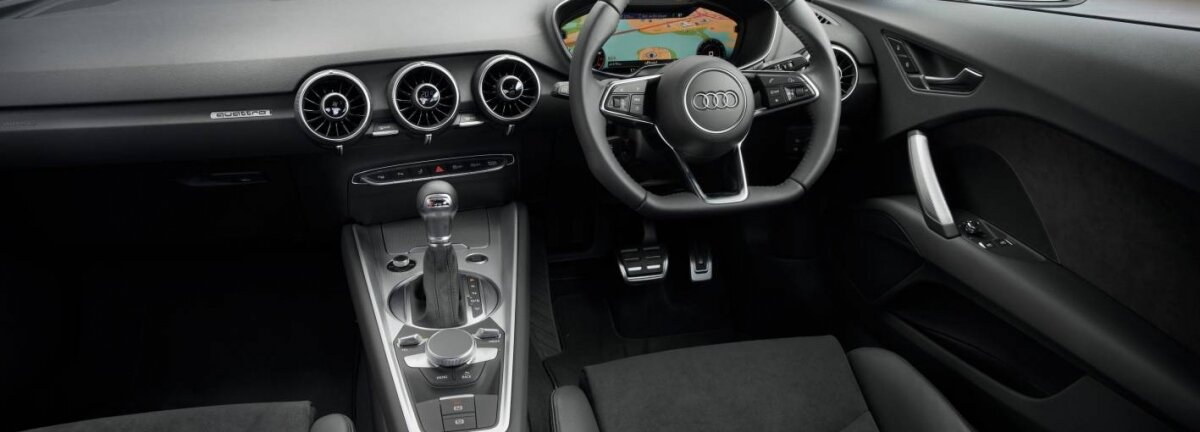The future of the auto industry: Three experts place their bets - Part III

Our Leading Business by Design: Automotive Sector report – an in-depth analysis of strategic design’s impact on the passenger automotive sector – is now available on Amazon.
The research investigated several forces affecting the wider automotive ecosystem, including increasingly connected vehicles and the entry of tech giants like Google and Apple, autonomous cars, the rise of the sharing economy and a greater interest in sustainability.
With the copies of the report now available on Amazon, we asked three insiders for their predictions about how these changes might pan out.
Our third expert is Geoff Teehan, Product Design Director at Facebook. He wrote a popular blog post on in-car UX.
What challenges will the auto industry come up against in the future when trying to improve in-car interfaces?
From all of the research that I’ve done and all the people that reached out to me in response to my article, there are a number of challenges.
The first is time to market. With your phone or your computer, really what companies are able to do is simply update the software. The stuff that you’re seeing in vehicles is older technology that was designed years ago. The cycle to get some of these things to market is incredibly long and difficult, and there’s a huge number of trade-offs that get made along the way.
[Vehicles] have to go through an enormous amount of testing in order to make it to market.
For one, they have to go through an enormous amount of testing in order to make it to market. From what I understand, a number of lines of code inside a car greatly exceed by multiple factors the lines of code that are in all of iOS or an entire operating system. So you’re dealing with a lot of complexity. And these are systems that can’t crash. If an app crashes, it’s really not that big a deal; you relaunch it. But you really can’t have a component in your car crash. All of these systems are so tied into everything. There’s a huge number of constraints that are put around them.
There are also limitations in the hardware. Interfaces in cars have to work across a multitude of makes and models and sometimes even brands, with some of the big conglomerates now. They’re really focused on efficiencies.
How can the car industry begin to create systems that are more easily updatable?
So that’s going to be a big uphill challenge. How can the car industry begin to create systems that are more easily updatable, where the focus is a lot more on the experience and design?
I’ve had two people who work at large car manufacturers explain to me that one of the problems is that the industry tends to have engineers and project managers or product managers who value design less than you would in, say, a lot of the bigger technology companies that aren’t tied to automotive.
Have you seen any decent in-car UX?
Not really. I see bits and pieces. I think the notion of having this giant touch screen feels really inappropriate, especially from a driver’s perspective because it’s not tactile at all. It takes your eyes off the road.
The climate control in the 2015 Audi TT...it's appropriately combining a mix of analogue and digital together.
One thing I’ve seen that I actually like is the climate control in the 2015 Audi TT. They put a little digital display on an inset in the knob for the climate control. To me, that is a much better system and model because it plans a little bit of display information, and you still have the tactility of some sort of physical input – like a dial, switch or knob. It’s appropriately combining a mix of analogue and digital together, rather than just going by a purely digital or touchscreen route.
Before I moved to San Francisco, I used to travel a lot and would rent a huge variety of cars. They’d all be brand new model years. Even though some of the systems tried to be quite fancy in terms of their interface or visual design (mostly overdesigned in my opinion), they all had huge amounts of latency; traversing menus or dragging a map didn’t even feel as good as it would when using your iPhone or Android phone from two years ago.
How do you think tech companies will affect the industry?
I work close to the Google Campus and see their self-driving cars almost every day. I’m sure they’re focusing mainly on how you get a car to be driverless; figuring out what the correct interface is to control the radio or climate control is probably not even on the backlog.
We’re going to have to deal with the legacy of older systems that existing manufacturers have.
There are rumours and speculations that these companies could be getting into the car manufacturing business, but I find that a little bit of a stretch. With self-driving cars, they’re working off of existing manufacturers. So again, we’re still going to have to deal with the legacy of older systems that existing manufacturers have. I think that it’s going to be very difficult to truly improve some of those experiences.
Subscribe to our newsletter
Want to keep up with the latest from the Design Council?
